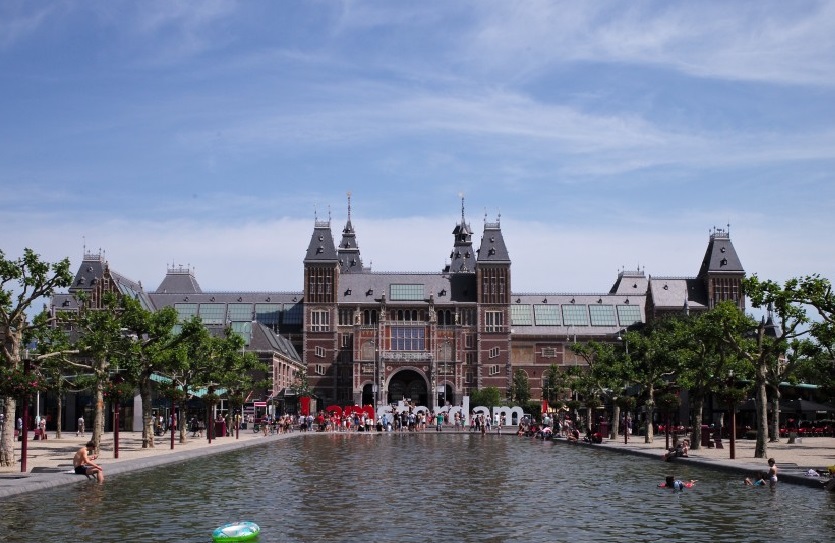The Amsterdam Rijksmuseum


The Rijksmuseum in Amsterdam is the national museum of the Netherlands. A world class museum, its collections are housed in an impressive building built in a unique combination of Gothic and Renaissance styles. The building was designed, not without some controversy, by architect Pierre Cuypers, and first opened in 1885. The recently modernised museum now attracts over two million visitors annually, many of whom come to see its outstanding collection of paintings by Dutch masters such as Rembrandt van Rijn and Johannes Vermeer.
The museum’s own story is a fascinating part of the history of the Netherlands. Prior to moving to Amsterdam in 1808, the museum was located in the Hague. The core of the original collection was formed from art and artefacts belonging to both the State and Dutch Stadtholders, who were the viceregals, or senior magistrates, of the United Provinces of the Netherlands. The creation of the Batavian Republic in 1785, consisting of most of the territory now known as the Netherlands, provided the impetus to found a national museum. Inspired by the success of France’s magnificent Louvre Museum, in 1800 the Nationale Kunstgalerij (National Art Gallery) opened in the Hague, with around 200 objects on show.
The museum relocated to Amsterdam during the reign of Louis Bonaparte, brother of Napoleon, who established Louis as ruler of the newly created Kingdom of Holland. This meant that some of the most famous paintings in Amsterdam, notably Rembrandt’s masterpiece “The Night Watch”, could now be housed in the national museum, which was located in the royal palace. As the collections grew, the search was on for a permanent home, which the museum eventually found with the construction of the striking but contentious Cuypers building.
In addition to its famous historic and contemporary artworks and related pieces, the museum has a memorable collection of Asian art and sculpture covering 4000 years. The collection, comprising pieces from India, Japan and China, as well as Indonesia, Vietnam and Thailand, is housed in a dedicated space known as the Asian Pavilion. This calm, zen-like set of galleries is surrounded by water and was designed by the architectural studio of Cruz and Ortiz.
Among the other unmissable experiences of a visit to the Rijksmuseum is the Philips Wing, also known as the south wing, or affectionately as the “fragment building”. This was constructed in 1890 from the remnants of demolished buildings, which means it is effectively a history of Dutch vernacular architecture. The museum’s stunning research library, where visitors can browse and read the 400,000 plus volumes, is a bookworm’s paradise.
The Rijksmuseum is situated in one of Amsterdam’s best-loved open spaces, the Museumplein, or Museum Square. The Van Gogh Museum and the Stedelijk Museum for modern and contemporary art are both nearby. Museum Square is also a popular venue for outdoor concerts and other events, making the museum quarter an essential for every visitor to the city.